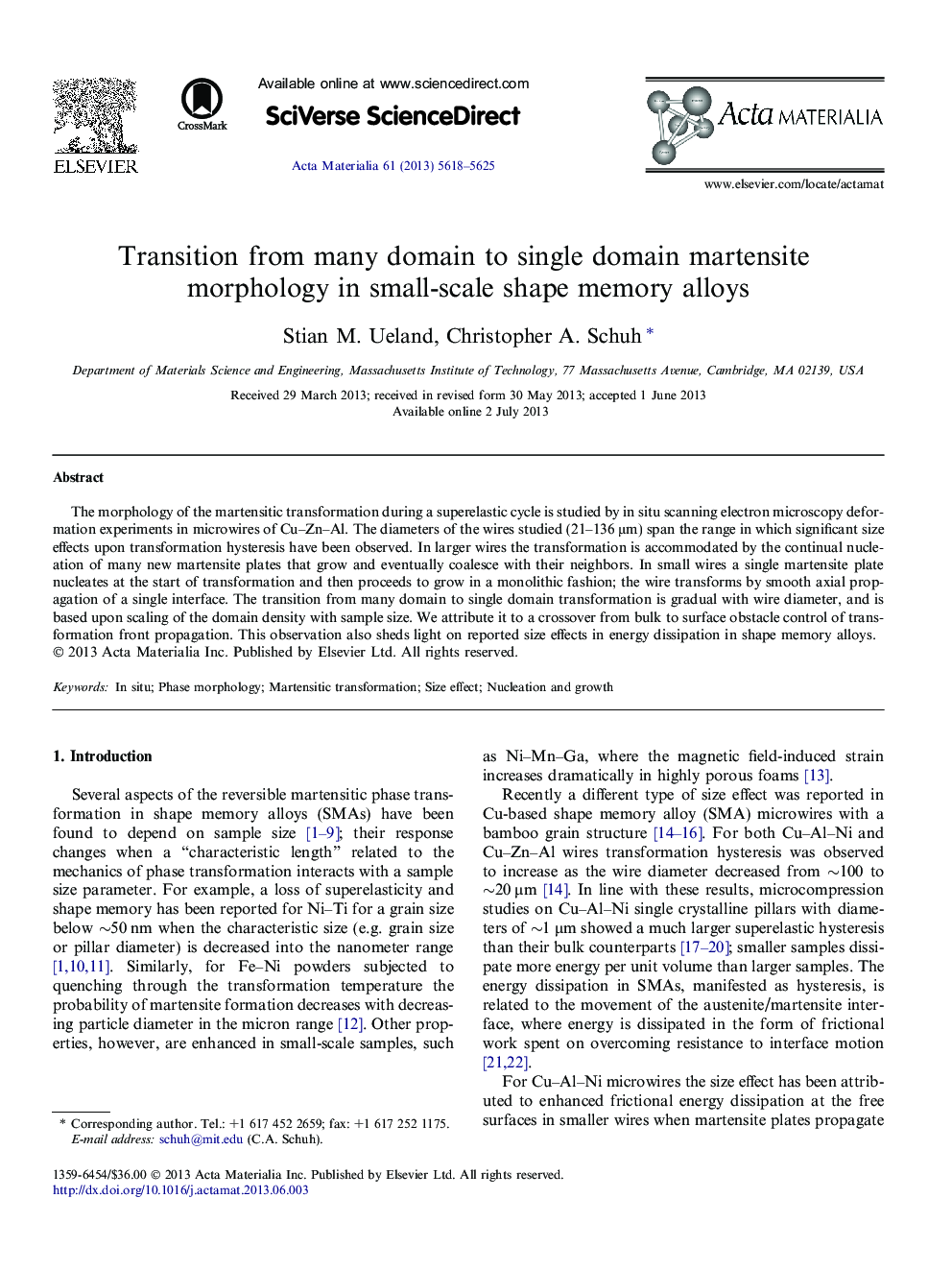| Article ID | Journal | Published Year | Pages | File Type |
|---|---|---|---|---|
| 1446143 | Acta Materialia | 2013 | 8 Pages |
The morphology of the martensitic transformation during a superelastic cycle is studied by in situ scanning electron microscopy deformation experiments in microwires of Cu–Zn–Al. The diameters of the wires studied (21–136 μm) span the range in which significant size effects upon transformation hysteresis have been observed. In larger wires the transformation is accommodated by the continual nucleation of many new martensite plates that grow and eventually coalesce with their neighbors. In small wires a single martensite plate nucleates at the start of transformation and then proceeds to grow in a monolithic fashion; the wire transforms by smooth axial propagation of a single interface. The transition from many domain to single domain transformation is gradual with wire diameter, and is based upon scaling of the domain density with sample size. We attribute it to a crossover from bulk to surface obstacle control of transformation front propagation. This observation also sheds light on reported size effects in energy dissipation in shape memory alloys.
